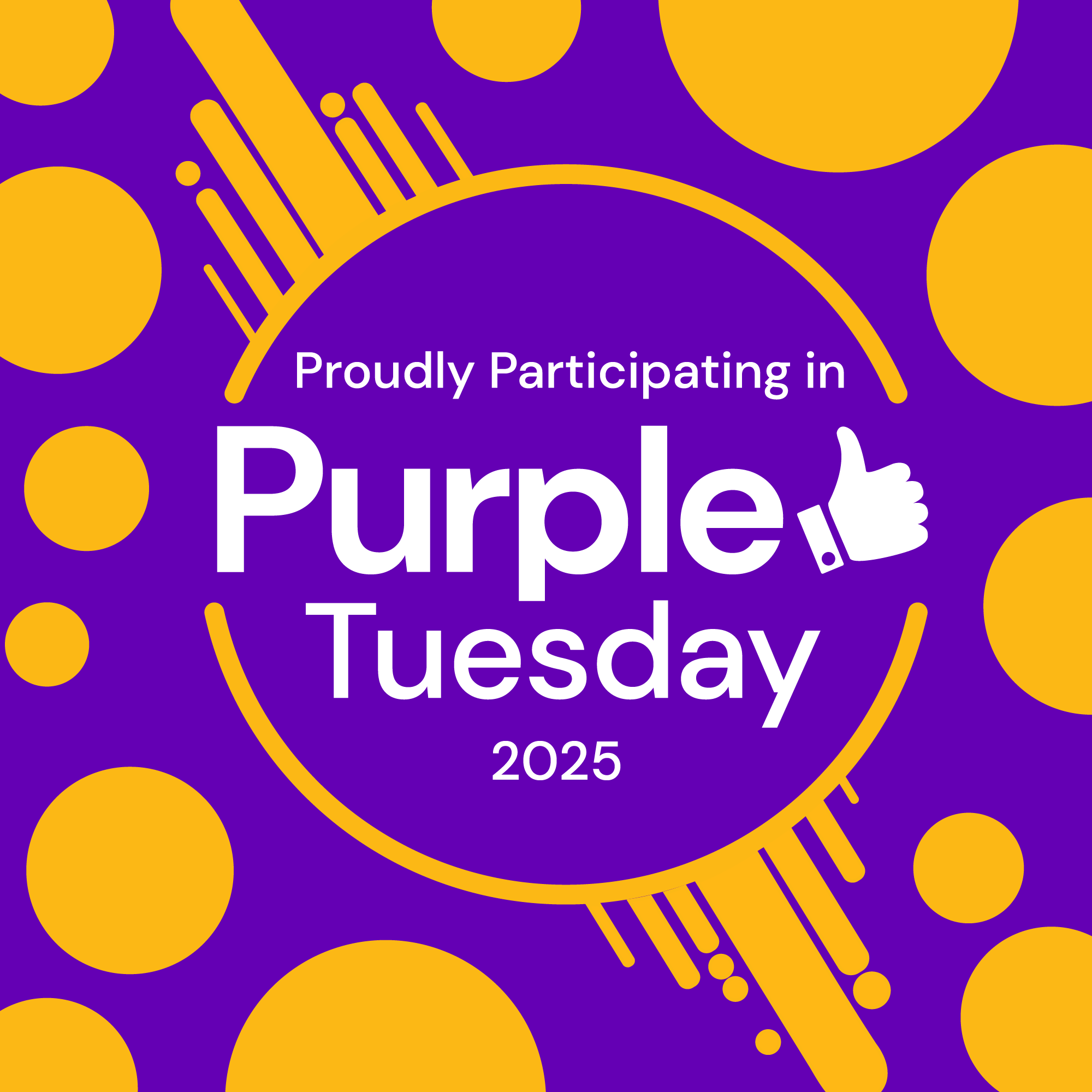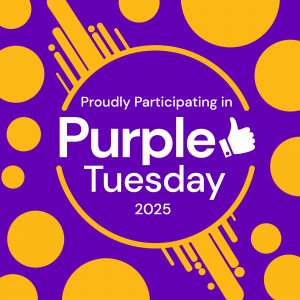And Our Favourite Colour Is…Purple

Article by Paul Hopkins: Transcription, Sales & Advocacy Officer – All Formats
The Purple Movement, what is it? A global social movement taking place on 4th November 2025 and in early November each year.

The initiatives headline message is a simple one: Accessibility every day, everywhere, for everyone!
In the UK on Purple Tuesday this year:
- Celebrations will take place at major shopping centres across the nation.
- Piccadilly Lights in Central London will turn Purple at 8:00am GMT with an exciting billboard animation from the Purple Tuesday team.
- At 6pm GMT in Westfield Square, Westfield London (White City), a low-noise drone show will light up the sky with “An Inclusion Story in Lights” from “The No Horn Unicorn” by Shani Dhanda, author and Purple Tuesday Global Ambassador
Purple Tuesday inspires leadership and staff of organisations from all sectors and sizes to foster awareness, deepen understanding, and implement solutions for enhanced accessibility in their customer environments.
Statistics, statistics and more statistics
This Blog post will be stats heavy, for good reason as I’m sure you will agree. In future Blogs, we’ll focus on specific areas of business; charities and public body sectors, offering you top tips on how you can consistently start to develop, maintain and improve your access offer.
The disabled population in the UK:
- 23% working age adults are disabled
- 45% of pension age adults are disabled
- 32% of households in England have at least 1 disabled person
- 37.9% of households in Wales have at least 1 disabled person
Sources: Open Family Resources Survey: financial year 2022 to 2023 (GOV.UK). Disability, England and Wales: census 2021 (ONS)
Attitudes to disability: They often affect how people view accessibility. And how much people think about inclusion.
- 60% of people underestimate how many disabled people there actually are
- 75% of people think of disabled people in general as needing to be cared for
- 32% think disabled people are not as productive as non-disabled people
- 13% hardly ever or never think of disabled people as the same as everyone else
- 49% of working age adults feel excluded from society because of their condition or impairment
- 41% working age disabled people do not feel valued by society
Sources: Scope Disability perception gap report; Access to digital technology and services
Why Would I Consider All Of This? Could My Business Be Missing Out? Are There Wider Benefits In Being Inclusive By Design?
The spending power of disabled people is definitely something to consider when answering this question. Our collective spending power and that of our households continues to grow. It’s estimated to be worth £274 billion per year to UK business. Research also shows how much industry lost and there are solid broader advantages to embracing accessibility.
Loss To Businesses By Sector, Per Year:
· High street shops: £267 million
· Restaurants, pubs and clubs: £163 million
· Supermarkets: £501 million
· Energy companies: £44 million
· Phone and internet providers: £49 million
· Transport providers: £42 million
· Banks or building societies: £935 million
The online spending power of people with access needs is around £24.8 billion per year to UK business.
Sources: Purple pound. Click-away pound 2019.
Financial loss to businesses: Businesses lose money from disabled customers due to inaccessible websites and products. In 2016, research showed that;
- 7 in 10 disabled customers said they will click away from a website that they find difficult to use
- 83% of participants with access needs limit their shopping to sites that they know are accessible
- 86% have chosen to pay more for a product from an accessible website rather than buy the same product for less from a website that was harder to use.
- 4 million people abandoned a retail website because of the barriers
The Click-Away Pound? an estimated loss of £11.75 billion comes from the ‘Click-Away Pound’. In 2019, the Click-Away Pound has grown to £17.1 billion.
The biggest perceived barriers to adopting accessibility within an organisation include:
- Lack of clear ownership within the organisation 43%
- lack of ‘the right people or skills’ 16%
- Finding it hard to justify the spend 11%
- Not sure what accessibility actually means 10%
- Senior leadership not convinced of the benefits 6%
And Those Wider Benefits In Being Inclusive By Design? According to Accenture’s analysis of the Disability Equality Index (DEI), companies that prioritise digital inclusion:
- are twice as likely to have higher shareholder returns
- 28% higher revenue
- see a 30% better performance in economic profit margins
Sources: The DEI is a tool that gives US businesses an objective score based on their disability inclusion policies and practices. Click-away pound report 2016; Click-away pound 2019; The Disability Inclusion Advantage, Accenture (PDF)
The top 2 incentives for becoming accessible:
- Universal benefits of accessibility 52%
- Avoiding legal action 27%
Source: Digital Accessibility: Achieving Great CX For All (Inviqa)
I’m Interested in discovering more about making my products and services more inclusive and accessible. What should I do next?
All Formats specialises in creating, transcribing and producing information from standard print to Braille, large print, audio and accessible digital formats on behalf of businesses for their end users who are either blind and partially sighted or have other reading disabilities.
We are well connected to the vision impaired community and related stakeholders meaning we can effectively raise awareness of businesses and organisations who choose to work with us around the accessible services they want to provide.
At All Formats, the journey starts with a conversation. Talk to us today via our contact details to find out how we can help you connect and communicate with a significant minority community to which we are proud to belong.
resource
